IT (Information Technology) Publications
Publications, written by Mike (Charnley-)Fisher whilst an "IT expert"
These articles are mainly of historical interest since they go back to the late 80s when heavily involved with the Atari Transputer Workstation (Abaq or ATW800), Perihelion's Helios operating system (a parallel processor version POSIX compatible version of Unix), and X-Windows. The ATW was one of the first machines to implement X-Windows (the author appearing on the training brochure front cover as one of the first in the UK to use it).
The Atari days.
I was fortunate enough to be funded, by McDermott, to work alongside Advanced Systems Consultants (ASC) in Cambridge to port their intelligent process design software (Phoenix) to run on the ATW. This involved translating large amounts of Fortran 77 into C and making use of the X-Windows graphics libraries in place of their own. I supported Atari and Perihelion throughout its early days, attended the Las Vegas Comdex launch of the machine, and was commissioned by Les Player of Atari to write the user manual. Unfortunately I have lost the original of the latter although parts of it, credited to Les Player, can be found in the hardware manual available at www.michaelp.org/transputer/.
-
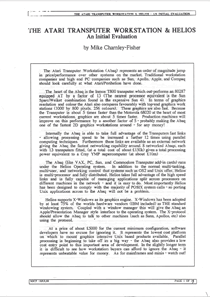
The Atari Transputer Workstation ...
This, fairly extensive, review of the ATW and Perihelion's Helios was originally written as part of the proposal to McDermott to get funding to port ASC's Phoenix software to it.
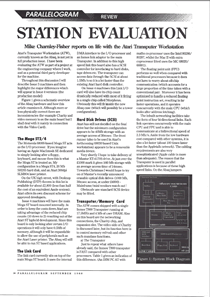
Station Evaluation
Atari used the evaluation report to help marke the ATW. This article was an abbreviated version of the original published in the Parallelogram magazine which was dedicated to lift the profile of all things related the the "new" concept of parallel processing.
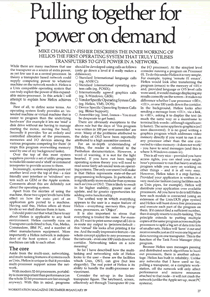
Pulling together for power on demand
This article was written in response to a request by the magazine to expand on the Helios operating system. Unlike the majority of modern day shared memory parallel processing architectures, each transputer had its own memory pool. To make this work, messages had to be sent (a truly object oriented way of computing).
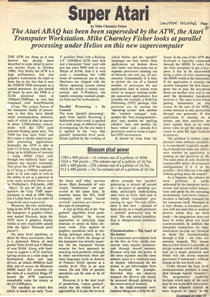
Super Atari
This article was written after a complaint to the magazine about another author copying one of my previous articles and calling it his own work (word for word copy!). It records the change in name from the "Abaq" to the ATW.
X-Windows
The ATW was designed to be one of the first machines to be able to run graphics fast. In those days the standard desktop resolution was 640x480 with 256 bits of colour and MS Windows still hadn't reached version 3.1 (the first version to really make an impact). The Atari had the "blitter" (designed by Richard Miller who previously worked with Sinclair on the QL) and was capable of displaying 1024x768 with animation. Helios was POSIX compatible and so supported X-Windows. At the time I thought X-Windows would be become the norm. However, the Unix camps were fragmented - all with their own versions and whilst attempts to standardise were afoot, Microsoft timed things right. The following articles covered X-Windows.
-
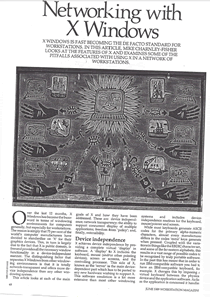
Networking with X Windows
The editors at Workstation asked for a follow-up to the Helios article with a focus on X Windows. This article described some of the difficulties in using X Windows across multiple processors (not really across multiple networked machines as the title suggests).
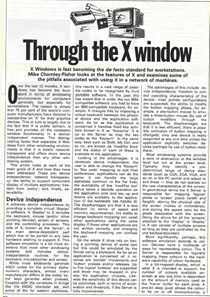
Through the X window
At the time Personal Computer World (PCW) was one of the better mainstream publications on personal computing. This article was a slightly later version of the previous article.
Object Oriented Technology
Whilst working at Aspect, we used one of the first implementations of C++ to do most of the development work. The Object Oriented way of doing things was a natural follow-on from parallel processing and X-Windows and the concepts were taken to John Brown (then part of the Trafalgar House group). The "global office" concept, led by Jim Noble at Trafalgar House, received a lot of publicity. This interview was linked to this publicity.
-
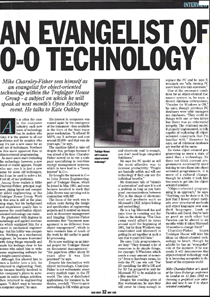
An Evangelist of O-O Technology
This talks as much about other emerging technologies - such as electronic document management and the paperless office. At the end, this article talks about a presentation I was about to give (can't even remember doing that - obviously getting old!)